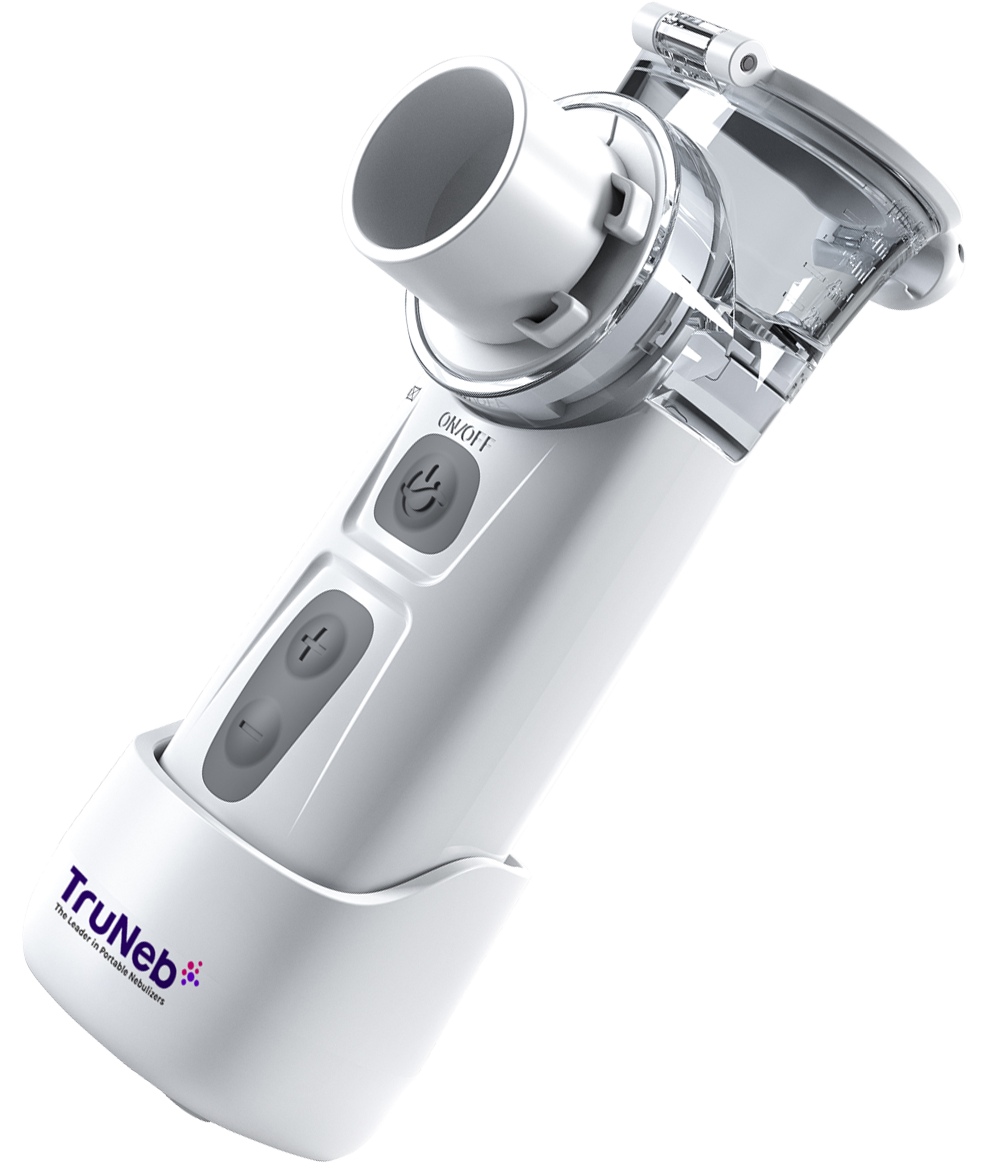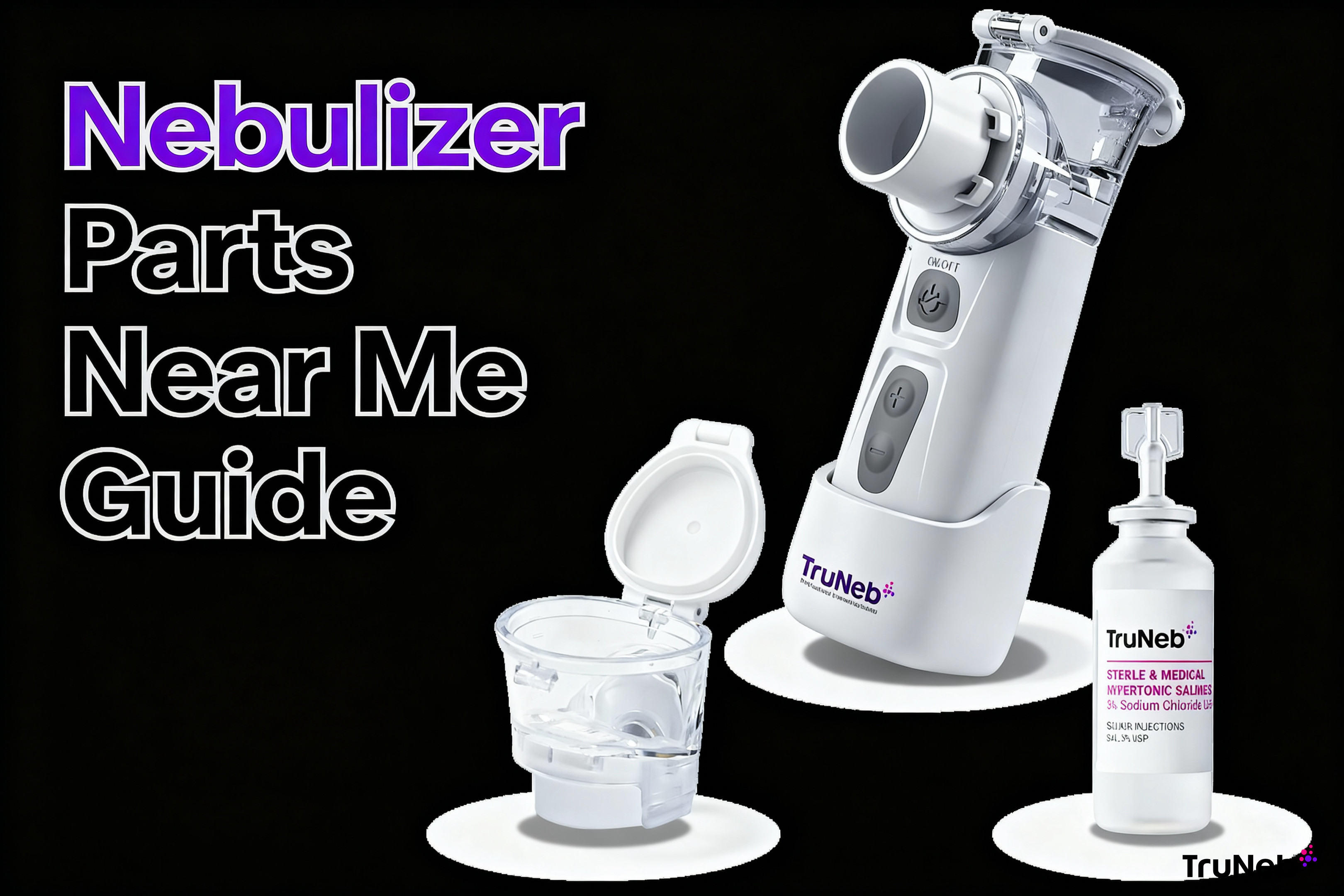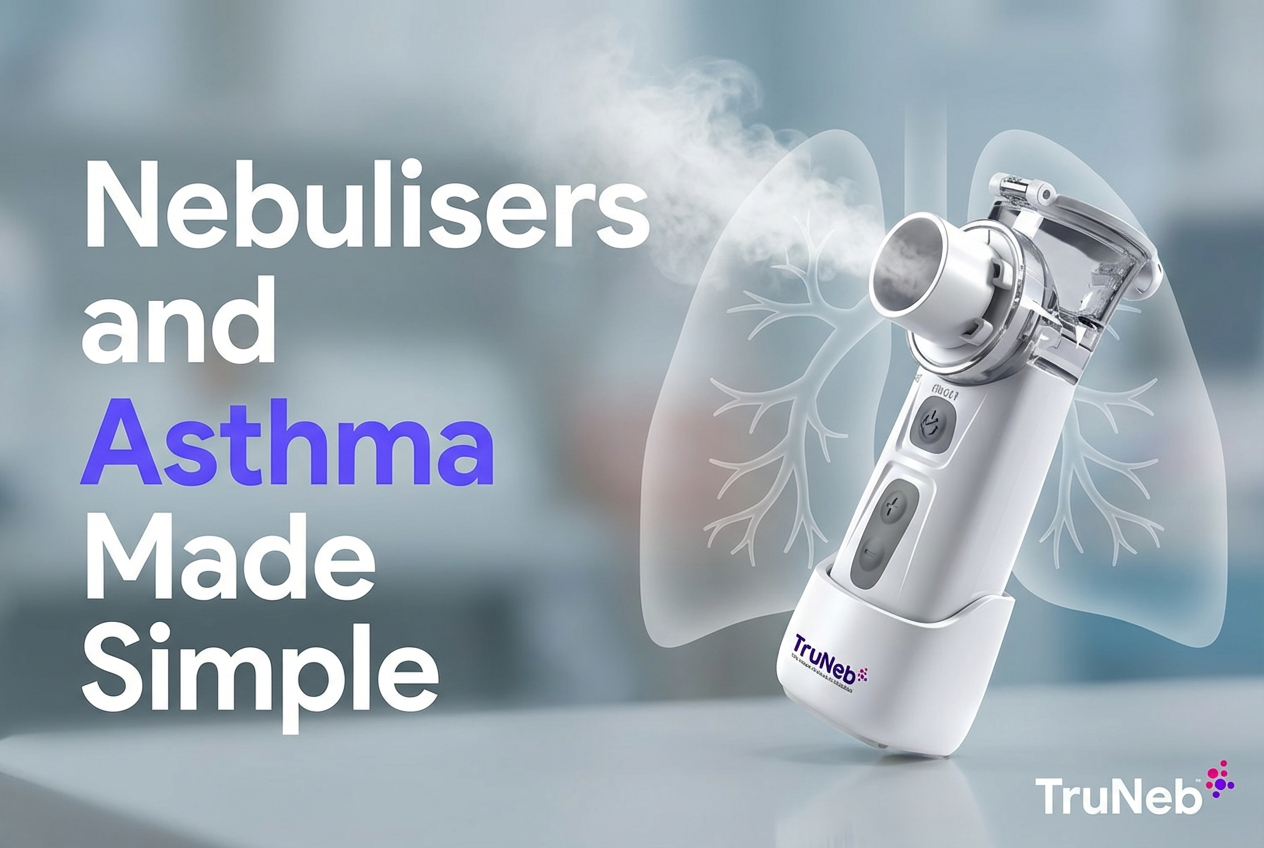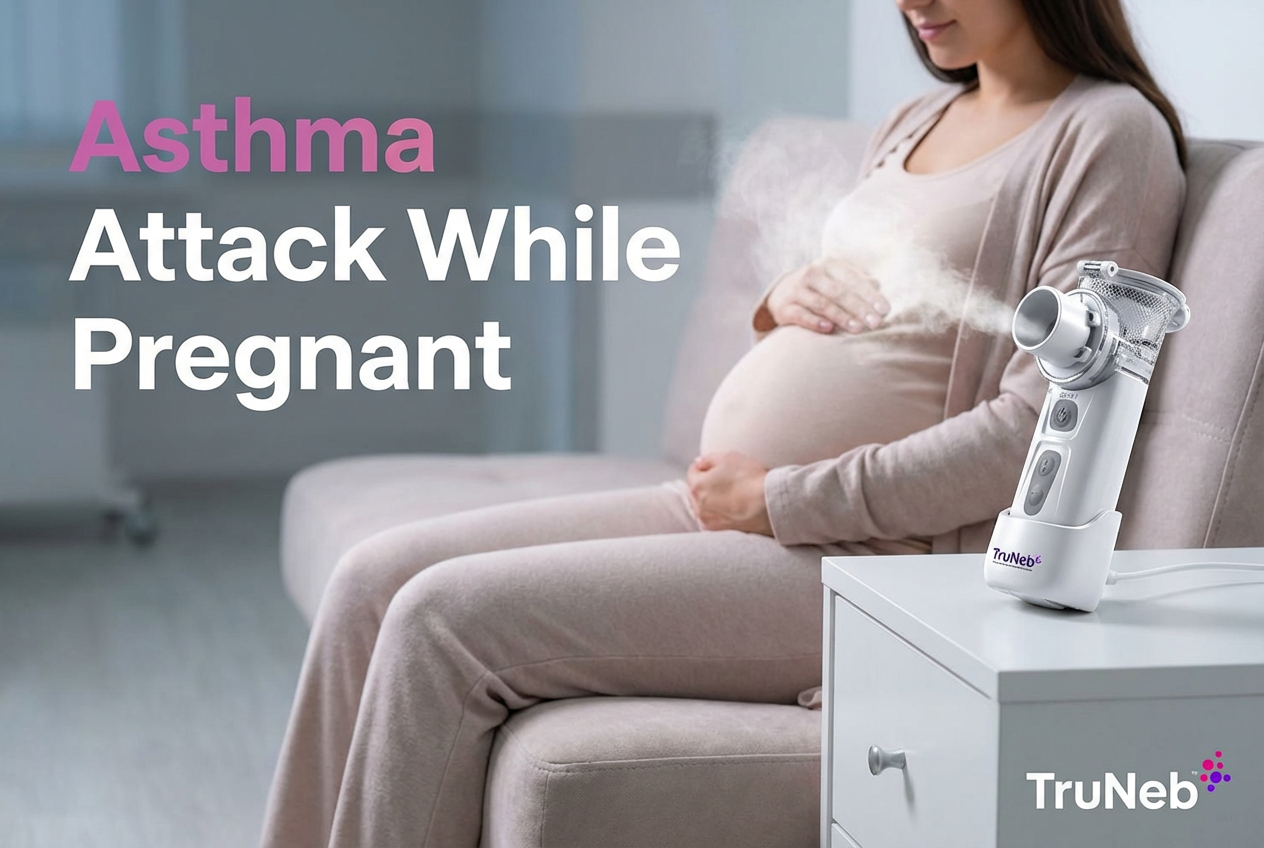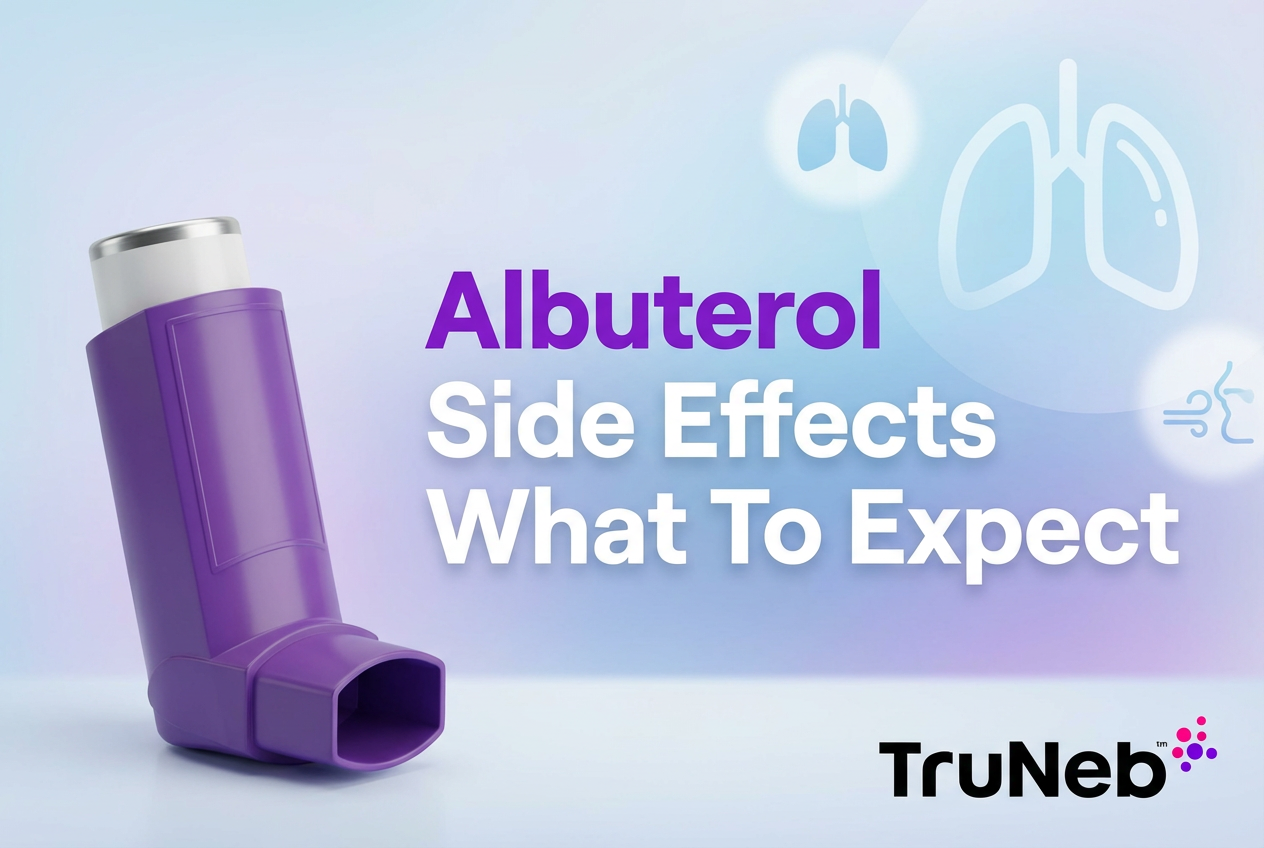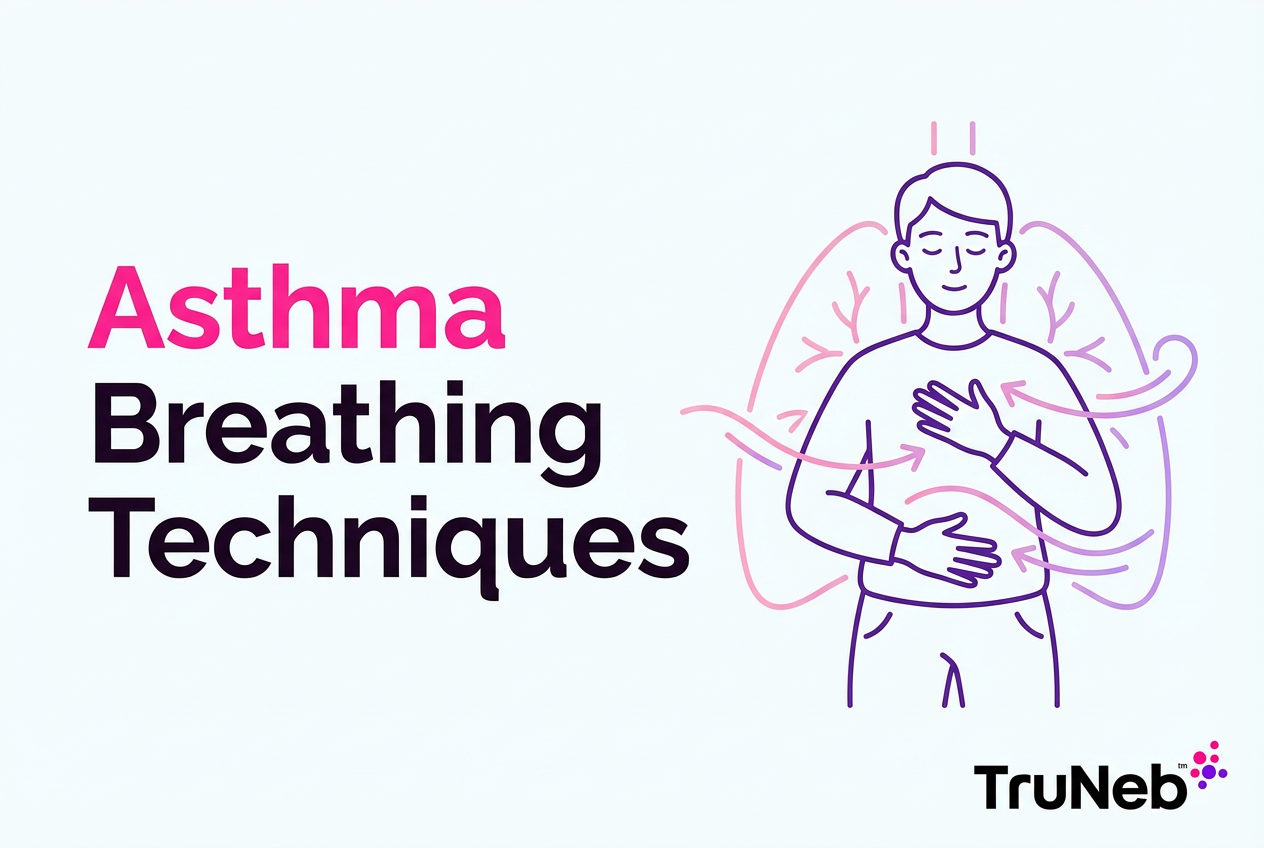On this page

What Is a Rechargeable Portable Nebulizer and How Does It Work?
A rechargeable portable nebulizer is a small, handheld, battery-operated nebulizer that turns liquid medicine into a fine mist you breathe in. It runs on a built-in battery, so you don’t need a wall outlet, and you can use it as a travel nebulizer when you’re away from home. Most portable models use vibrating mesh or ultrasonic technology to create a steady mist that reaches your lungs.

In short: add your prescribed solution, attach the mouthpiece or mask, press start, and breathe normally until the mist stops. The goal is the same as a home unit, just in a quieter, travel-friendly package.
A rechargeable portable nebulizer is a battery-operated device that turns liquid medicine into a fine mist you inhale anywhere.

Who Benefits and When a Portable Nebulizer Helps
People with asthma or COPD usually need timely treatments. A portable nebulizer lets you stay on schedule at work, school, or while traveling. Parents can give treatments in the car line or on a trip. It’s also useful during power outages when a plug-in machine won’t run.
If you’re active, you can keep medicine with you for symptoms after exercise or exposure to triggers. With millions of Americans managing asthma, having a device you can use anywhere can help you stay on schedule and reduce the chance of symptoms building.
Portable nebulizers help you stay on schedule during work, school, travel, or power outages.
Benefits of Rechargeable Portable Nebulizers
- Use it anywhere: No outlet needed, so you can treat at home, work, school, or on the go.
- Better adherence: Easy access helps you take treatments on time; staying on schedule is linked to better control.
- Quiet operation: Mesh and ultrasonic units are typically very quiet, so you can use them without drawing attention.
- Fast sessions: Most complete a dose in minutes, so you can get back to your day.
- Cordless convenience: USB charging means no disposable batteries.
- Fits all ages: This nebulizer machine for adults and kids works with masks or a mouthpiece for families.
- Travel-ready: You can use it as a travel nebulizer on planes, in cars, or at work.
Portability, quiet operation, and quick sessions make it easier to keep up with breathing treatments.
Nebulizer Types at a Glance
| Type | Noise | Power | Portability | Particle size | Best for / notes |
|---|---|---|---|---|---|
| Mesh | Very quiet | Rechargeable battery | Excellent | Fine, consistent (often ≤5 μm) | Handheld use; efficient delivery; low maintenance |
| Ultrasonic | Very quiet | Rechargeable battery | Excellent | Fine to medium | Fast treatments; may slightly warm liquid |
| Jet (compressor) | Loud | Wall outlet | Low | Fine to medium | Reliable home use; broad medication compatibility |
* Some ultrasonic models can slightly warm solutions; follow the manufacturer’s guidance.
Steam inhalers are not nebulizers and are not for prescription medications.
Buying Guide: How to Choose the Best Portable Nebulizer
Use these factors to pick one that fits your day.
Portability and design
Look for a compact, lightweight body that fits in your hand or bag. A stable shape helps prevent spills when you set it down.
Battery life and charging
For a battery-operated nebulizer, check how many minutes of mist you get per full charge. USB charging (ideally USB-C) and the ability to use a power bank can help on trips.
Medication delivery and efficiency
Smaller particle sizes (about 5 μm or less) help medicine reach your lower airways. Adjustable mist rates can help with different solutions, including saline. Not all mesh devices handle suspensions well, so check the manufacturer’s guidance for your medication. If you’re choosing a portable nebulizer for albuterol treatments, look for consistent particle output and easy cleaning.
Noise level and vibration
Quiet operation is key for night use, school, or the office. Mesh units are typically very quiet.
Ease of use and maintenance
Fewer parts, one-button controls, and clear indicators make daily use simple. Quick-clean or self-clean functions can help prevent clogs.
Cost and warranty
Compare price, return policy, and warranty length. Good support and available replacement parts add peace of mind over time.
Compare size, battery, mist quality, noise, cleaning, and support to find the right portable nebulizer.
How to Use and Care for Your Portable Nebulizer
- Charge and set up: Fully charge the device. Add your prescribed solution to the cup, then attach the mouthpiece or mask.
- Breathe the mist: Sit upright. Press start and breathe normally through your mouth until the mist stops.
- Rinse after each use: Empty and rinse the cup and mouthpiece/mask with warm water, then air-dry.
- Daily clean: Wash parts with mild soap and water. Let everything dry completely.
- Disinfect regularly: Follow your device’s instructions or a trusted guide to reduce germs.
- Store and recharge: Keep parts clean and dry in a case. Top up the battery so it’s ready next time.
Cleaning steps align with American Lung Association guidance; always follow your device’s manual.
Keep your device clean, dry, and charged so it’s ready for your next treatment.
Common Mistakes to Avoid
- Starting on low battery: Charge after use so it doesn’t shut off mid-treatment.
- Skipping cleaning: Residue can clog the mesh and raise infection risk. Rinse after each use and clean daily.
- Wrong assembly or angle: Keep the cup upright and parts snug so the mist stays steady.
- Using unapproved liquids: Only nebulize solutions meant for nebulizers. Don’t nebulize oils or non-medical liquids.
- Confusing steam inhalers with nebulizers: Boxes labeled “steam inhaler” are NOT for breathing medications.
- Ignoring worn parts: Replace damaged cups, masks, or clogged mesh to keep performance consistent.
Charging fully, cleaning routinely, and assembling correctly prevent most issues.
Innovations in Portable Nebulizers and What Sets TruNeb™ Apart
Modern handhelds focus on durability, consistent mist, and simpler charging. Advances include improved mesh design for steady particle flow and longer atomizer life, materials that resist corrosion, and easier docking or cable charging.

A portable nebulizer like the TruNeb™ portable mesh nebulizer uses quiet vibrating mesh technology to deliver fine particles in minutes. Thoughtful touches—like adjustable mist rates and a compact, travel-ready body—help the device fit your day. The industry is also exploring smart features, such as reminders and tracking, to support daily routines.
Newer portable nebulizers focus on durable mesh, steady particle output, and simpler charging.
Safety First
- Use only doctor-prescribed inhalation solutions (for example, albuterol, inhaled steroids, and saline such as 3% or 7%). Don’t nebulize oils or non-medical liquids.
- Steam inhalers are not nebulizers and are not for prescription medications.
- Talk to your doctor if your symptoms don’t improve, get worse, or if you’re considering changing your treatment.
- If you have severe trouble breathing, chest pain, blue lips/face, or symptoms that rapidly worsen, call 911 or seek emergency care right away.
Disclaimer: This article is for informational purposes only and isn’t a substitute for professional medical advice, diagnosis, or treatment. Always talk with your doctor about your health and treatments.
Frequently Asked Questions
Tap or click a question below to see the answer:
Modern portable mesh nebulizers can deliver medicine as effectively as plug-in units for most standard treatments when used as directed.
Use doctor-prescribed inhalation solutions like albuterol, inhaled steroids, and saline (including hypertonic saline when prescribed).
Most handhelds provide about 30–45 minutes of mist per charge; actual time varies by model.
Rinse after each use, wash daily with mild soap, let dry completely, and disinfect regularly; see the American Lung Association’s guidance and your manual.
Yes. Most include adult and pediatric masks, so one nebulizer machine for adults and kids can work for the family.
You don’t need a prescription to buy a device off the shelf. Insurance coverage typically requires a prescription and following your plan’s process.
Coverage can vary by plan and device; check with your insurer about what’s included with a prescription.
Pharmacies, medical supply stores, and retailers like Walmart carry options. You can also buy directly from manufacturers online.
No. Steam inhalers are not for breathing medications and shouldn’t be used to deliver prescription solutions.
Conclusion: Choose the Right Nebulizer for Everyday Freedom
A good rechargeable portable nebulizer makes treatments simple, quiet, and on time—wherever life takes you. Focus on size, battery, mist quality, noise, cleaning, and support. When a device fits your routine, you’re more likely to use it consistently and feel better day to day.
The best nebulizer is the one you’ll use consistently because it fits your day.

